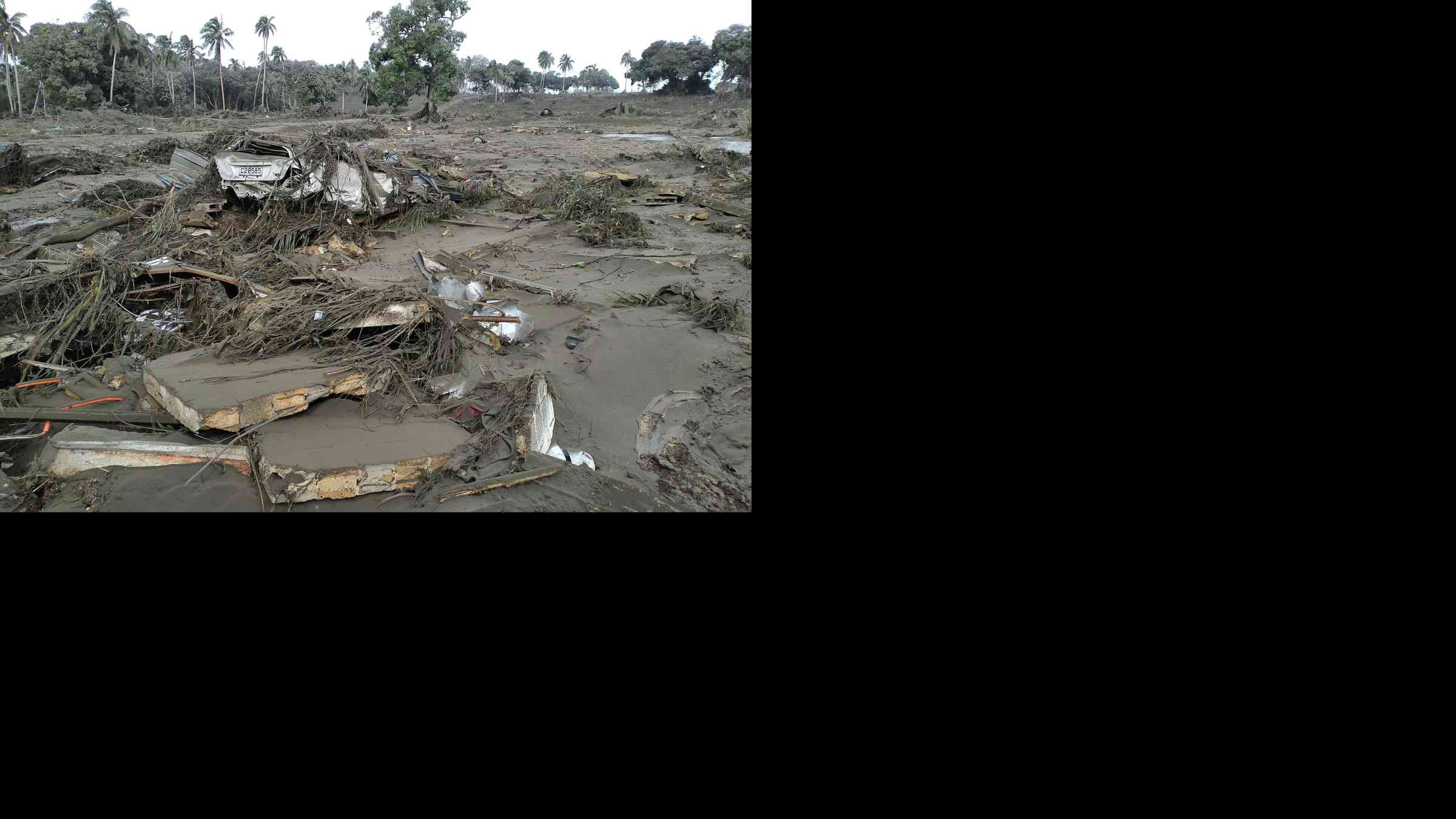Social media posts reveal human responses to deadly Tongan eruption

The January 2022 eruption of Hunga Tonga–Hunga Ha‘apai was among the most powerful ever recorded. It generated atmospheric shock waves that circled the globe several times, and its impacts claimed the lives of six people, including two in Peru, 9,600 kilometers away from Tonga.
In the aftermath of the eruption, social media videos depicted the nation of Tonga inundated by ashfall and tsunami waves. Now, scientists are examining these videos to quantify human responses and improve warning systems and will present their research on 15 December at AGU’s Fall Meeting 2022.
“Gauging the social response to events as complex as this [is] difficult, other than through interviews after the fact,” said Jacob Lowenstern, a volcanologist with the U.S. Geological Survey (USGS) and director of the Volcano Disaster Assistance Program who was not involved in the study. Quantifying that social response, however, could improve disaster preparedness in the future.
Predicting unpredictable reactions
People behave unpredictably during disasters, said Dare Baldwin, a psychologist at the University of Oregon who contributed to the study. “It’s important to understand the diversity of reactions so we can tailor education and early warnings to different people.”
To improve messaging and warning systems in hazard-prone regions, Sara McBride, a social scientist from USGS who will present the research, used closed-circuit television footage and social media clips to gauge how people responded to the Tongan eruption.
“A lot of physical scientists talk about how unique this event was,” McBride said. “We also wanted to understand people’s behavior during the crisis, whilst respecting the enormous challenges they faced.”
The researchers collected 480 videos that were posted to Reddit, Twitter, TikTok, and YouTube following the event, including 180 videos filmed in Tonga itself, plus tsunami footage from 11 countries across the Pacific.
McBride and a team of geoscientists and social scientists—including Tongan researchers and those involved in the Pacific tsunami response—watched the videos to identify what people did during and after the event.
They analyzed the videos using a method previously established to quantify e
But when faced with multiple hazards, such as earthquake and tsunami effects, the response was more haphazard. Under these circumstances, people tended to congregate with others rather than protect themselves by taking shelter or high ground. “We saw that exposure to cascading hazards like this can really confound people, and understandably so,” said McBride.arthquake response. This included noting whether people evacuated, took cover, or protected others, for example.
Shirley Feldmann-Jensen, professor of emergency services administration at California State University, Long Beach, and a pioneer of the video analysis method, said she is pleased to see other researchers apply the technique to different natural disasters. “Knowledge of what people actually do, rather than what they report they do, informs improved education and preparation for such events.”
One eruption, multiple hazards
The videos captured an ash cloud burgeoning over Tonga. This was closely followed by at least 13 separate shock-wave-type booms around the archipelago that coincided with tsunami waves that lurched across the Pacific.
Baldwin said the eruption’s onset and early shock waves may have warned nearby communities of the devastating effects to come. “What was hopeful was that we saw quite a few videos where people seemed to have proactively taken protective action, like filming from up high and a fair distance from shore,” she said. Similarly, McBride noted that people tended to evacuate once they saw tsunami waves breaching seawalls.
The findings highlighted the growing need for multihazard drills, McBride said. Every year, millions of people across the world practice earthquake drills by taking part in the Great ShakeOut, but multihazard drills are much more rare. Currently, New Zealand is leading the way with its multihazard ShakeOut, which includes an earthquake drill and a tsunami hīkoi (evacuation walk).
It makes sense to combine these drills, McBride said, both to save time and to better simulate simultaneous hazards. Multihazard drills could prepare communities to respond and clarify dizzying hazards that might otherwise muddle life-and-death decisions.